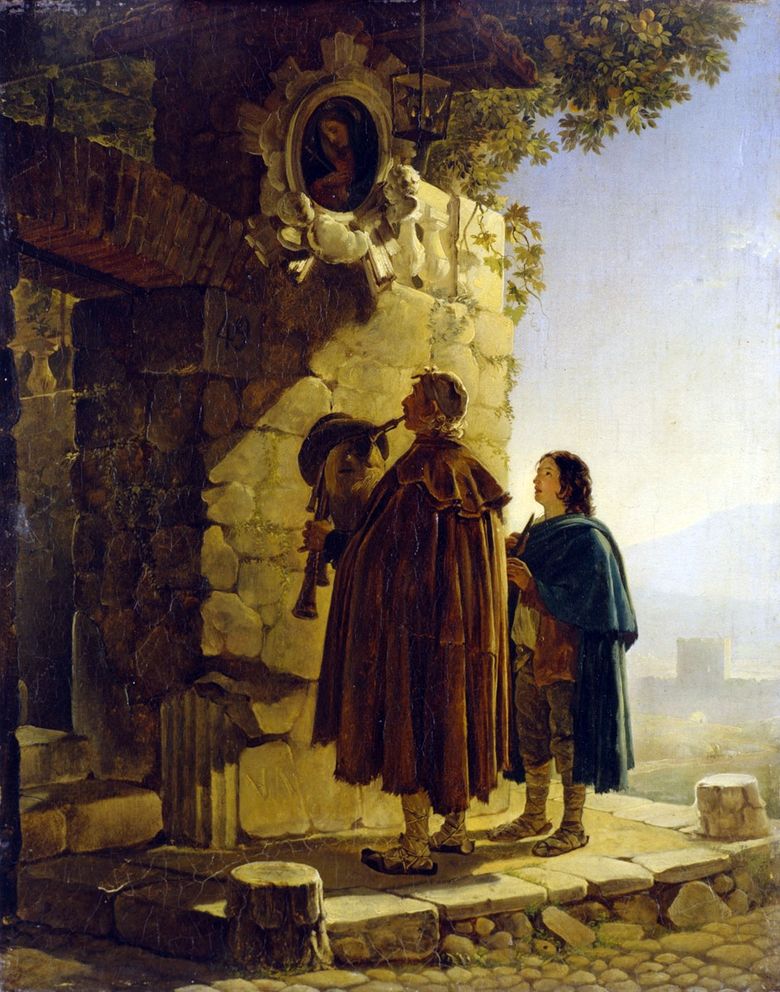
Pifferari, wandering Italian musicians playing the piffero, stopped at the entrance to the chapel. The old man and the boy in the simple clothes of the Italian poor – colored cloaks and wide-brimmed hats – look with reverence at the image of the Madonna, hanging on the wall.
The rays of the bright southern sun are felt in the shadows, reflected on the icon, on the stone wall of the chapel, on the faces of the musicians. The charm of the shining Italian nature is conveyed by Briullov with amazing authenticity and spontaneity.
By sending in 1822 Karl Pavlovich Bryullov together with his brother Alexander to Italy to get acquainted with the works of the classics of art, the Society for the Encouragement of Artists provided its pensioners with an instruction that said: “It should be noted that now people, unfortunately, prefer landscapes, insides, rural scenes and all that… is called “Tableax de genre.” Thus, the Society warned the artist, who had just finished the class of historical painting of the Petersburg Academy, from his hobbies unworthy of high rank
And yet, in the first period of his stay in Italy, Karl Bryullov writes exactly genre scenes, “insides”, is interested in the landscape. He creates the paintings “Morning” and “Noon” in those years, depicts scenes from the people’s life – “Pilgrims”, “Vespers”, “Pifferari”, etc. Work from nature in the open air brings new challenges for the young artist, but he does not changes the basic principles of the academic school. His paintings are written in a sonorous local color, the forms are outlined by an exact picture, the composition is carefully thought out and verified.
The poor clothes of his wandering musicians seem beautiful in the rays of the southern sun. Beauty and strict nobility of forms remain for the Academy’s pupil, for all his interest in the transfer of the directly observed scene from the life of the simple Italian people.
 Pifferari devant la Madonna Image – Karl Bryullov
Pifferari devant la Madonna Image – Karl Bryullov The Italian Morning by Karl Bryullov
The Italian Morning by Karl Bryullov Celebration in Albano by Karl Bryullov
Celebration in Albano by Karl Bryullov The Girl Gathering Grapes by Karl Bryullov
The Girl Gathering Grapes by Karl Bryullov Vespers by Karl Bryullov
Vespers by Karl Bryullov In the afternoon by Karl Bryullov
In the afternoon by Karl Bryullov Portrait of Francesco Ascani by Karl Bryullov
Portrait of Francesco Ascani by Karl Bryullov The Last Day of Pompeii by Karl Bryullov
The Last Day of Pompeii by Karl Bryullov